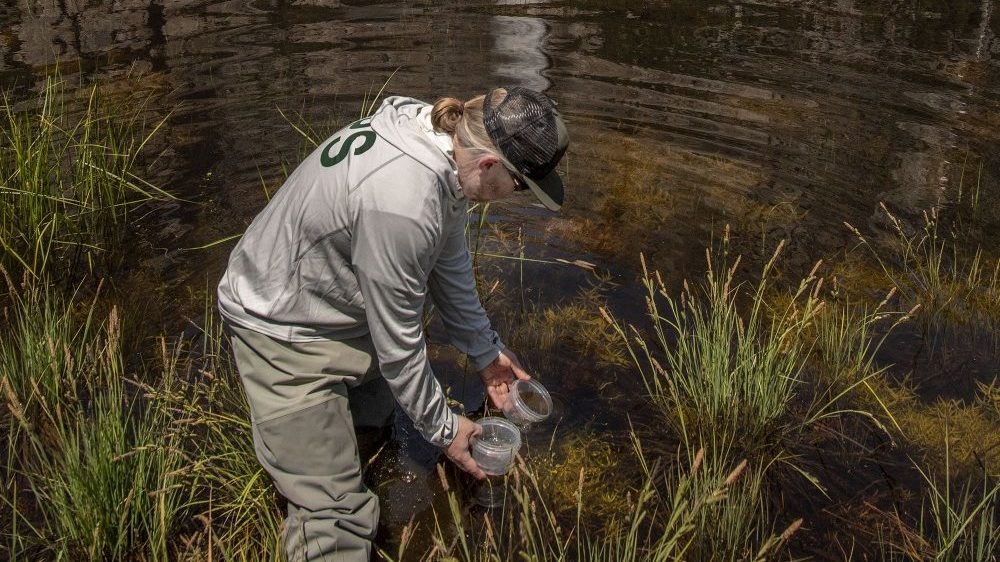*This is a 2020 archived project, view this year’s projects here.
Project goal: Use cutting-edge techniques to study and protect three vulnerable species: Yosemite toads, Sierra Nevada yellow-legged frogs and California red-legged frogs.
Why this work matters: Amphibian populations are declining worldwide, as habitats vanish or deteriorate, and invasive diseases and species arrive. In Yosemite, those same factors threaten three at-risk species: Yosemite toads, Sierra Nevada yellow-legged frogs and California red-legged frogs.
With support from our donors, though, the park has pushed to the forefront of amphibian science and conservation, with notable success. Scientists have seen yellow-legged frog numbers increasing, after years of carefully moving the endangered amphibians to healthy lake habitat; have increased their understanding of Yosemite toad populations, including the toads’ vulnerability to climate change; and have released hundreds of red-legged frogs in the Valley.
In 2020, the park’s aquatic ecologists built on prior amphibian research and restoration efforts, with a focus on two key ongoing issues: chytrid fungus, which can be deadly for amphibians, and habitat availability. With your support, the team set out to:
– Identify chytrid infections in yellow-legged frogs and Yosemite toads, using a highly accurate rapid-response test to enable quick detection and intervention in the field.
– Move yellow-legged frogs to healthy, restored habitat in high country lakes.
– Monitor recently released yellow- and red-legged frogs, using field surveys and microchips to keep an eye on how the frogs move through and use different habitats.
How your support helped: Your support helped biologists continue working to ensure Yosemite’s native frogs can thrive in healthy ecosystems. Biologists released dozens of Sierra Nevada yellow-legged frogs in high country lakes; transported tadpoles to a special facility at the San Francisco Zoo, where they will be raised safely before being reintroduced in the park; monitored California red-legged frogs in Yosemite Valley; and more. This work helps researchers gather information and hone techniques that can help protect amphibians within and beyond the park.
Project partners: Yosemite National Park and University of California, Santa Barbara.

